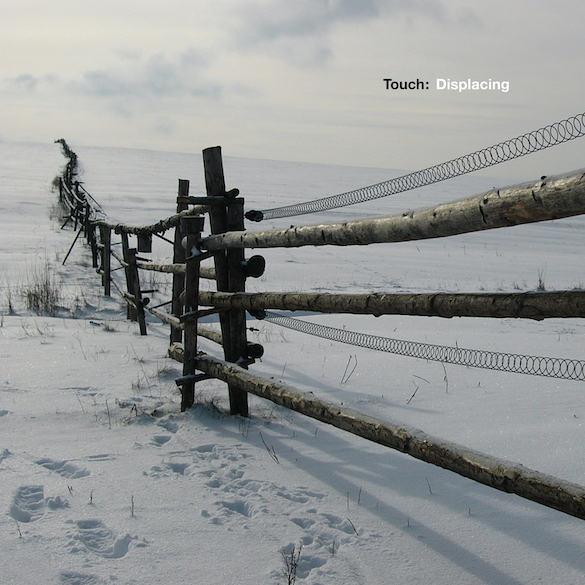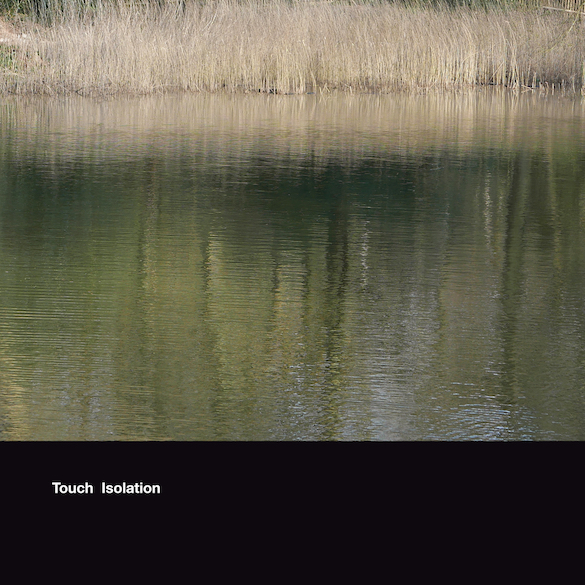1 track – Digital Download – 40:00 – 668Mb zip file [inc wav, pdf booklet and pdf text files]
Performed, composed and recorded by Jana Winderen
Photography by Jon Wozencroft
A lower quality audio file will be available from all good download stores on 3rd March. However, we strongly recommend you obtain the version in TouchShop. It is better and cheaper…
Track listing:
1. Out of Range
“Out of Range” is an audio work based on ultrasound and echolocation used by bats, dolphins and other creatures who operate beyond the range of human hearing – ‘seeing’ with sound, or perhaps ‘hearing’ objects.
All sound is invisible; ultrasound is inaudible. Of course, many species have a greater range of hearing than us humans and also more specific and specialised with complex combinations of the different senses… Creatures on both land and under water produce and/or perceive very high sound frequencies. Some species of insects, birds, fish, and mammals can emit and hear ultrasound, used for communications, hunting and orientation. These creatures operate on a different level of perception to us, in an inaudible range above 20kHz…
Many animals also use the acoustic properties of a space; a bat for example can use the echo from a tower block wall to amplify their calls for mates in the autumn; a toadfish uses the shape of a cave to amplify their calls to protect their habitat. Whales use the different acoustic properties at different depths in the ocean at different pressure levels to send their long distance calls. An astonishing fact about moths is that they have a reflex action with their wings to shut down when they hear the bat echolocation calls… That we reckon that this is so astonishing says something about us….
The mix for the piece is based on ultrasound, hydrophone recordings below the water and also of echolocation sound within audible range. The recordings were made in various locations in Central Park and East River in New York, USA, a forest outside Kaliningrad in Russia, Regents Park in London, UK, and various locations in Madeira, Norway, Denmark and Sweden. The ultrasound is time-stretched to bring it into a frequency range audible for human beings.
Recordings were made on a Pettersson Ultrasound Detector D1000X, Reson 4032 and DPA 8011 hydrophones and 4060 dpa microphones onto a Sound Devices 477T hard disk recorder.
Deutschlandradio Kultur, Redaktion Hörspiel / Klangkunst commissioned the piece for Elektroakustischer Salon: Art’s Birthday 2014, which was performed live at Berghain, Berlin, on Friday 17th January 2014. With thanks to Marcus Gammel.
The photographs mirror “the audible range” through a contrast between gateways, portals and sight lines, set against situations where the camera eye cannot make sense of the optical event it is confronted with.
Reviews:
Touching Extremes (Italy):
Jana Winderen: sound gathering, composition
“That we reckon that this is so astonishing says something about us…”.
In the above snippet – taken from Jana Winderen’s highlighting of the prodigious characteristics of a moth’s perceptive system – you can find, perfectly synthesized, the principles underlying this very track and, at large, the inadequacy of a noise-making species – that’s right, the human progeny – in front of the acoustic cosmogony that should idealistically represent its exclusive belief.
Out Of Range starts with an awesome prospect of vastly sloping resonance in the lower region of our hearing domain accentuated by diverse mutations of chirps, bleeps and waves in a mix of organic irregularity and ultra-pure natural events; ever since those initial instants we acquire an impression of perfection. The title refers to the Norwegian soundscaper’s utilization of animal emissions that deluded “evolved beings” can’t even dream of; they were captured by Winderen with appropriate machines, subsequently rendered (via time-stretching methods) in audible fashion for us to comprehend – hopefully – the importance of the laws that regulate the relationship between silence, physical existence, consequent improvement and defense of one’s own habitat, and achievement of the inherent purpose of a given organism’s development and itinerary through life.
As in some of her preceding works, the striking constituent in this artist’s know-how is the almost tactile spatiality of the concept in direct proportion with the downright beauty of the resultant construction. There’s a section – starting around the seventeenth minute – where the accumulation of hissing frequencies, built-in rhythms, peculiar whistling and celestial oscillation of processed textures literally squeezes the lactic acid off the mental muscle. In the midst of an intimate contact with the utterly healthy nothingness related to the loss of intellectual significance, the uselessness of words drives us towards a fundamental turning point; a decision is necessary, and it mostly has to do with not listening anymore to what someone has to say. At least not while confronted with issues of infinity, as it frequently happens during this piece when the juxtaposition of earth-derived signals and terrific supersonic parabolas redefine our hollow diminutive shapes.
This glorious composition, a veritable lesson to the countless amateurs inhabiting the field recording neighborhood, is a download-only release (the high-quality WAV version available from Touch is recommended). It was commissioned by Deutschlandradio Kultur but, apart from the spectacular response from Winderen – who confirms herself as a cardinal name in this area – the lone thought crossing my mind (as always) is that there is no “culture” other than finally being able to estimate people’s actual dimension after thousands of years of self-aggrandizing theories. This type of ear-enhancing education might assist in walking the first steps to that end. [Massimo Ricci]
SWQW (France):
“I like the immateriality of a sound work and the openness it can have for both associative and direct experience and sensory perception.” (J. Winderen)
La première écoute est surtout guidée par une certaine forme de curiosité (un album principalement basé sur des ultrasons de chauve-souris, dauphins, insectes et autres animaux, cela a forcément de quoi intriguer quelque peu). La seconde, et les suivantes, ne relèvent plus que de la fascination, tant ce disque a la capacité d’immerger physiquement son auditeur dans un espace aux reliefs uniques.
Ce n’est pas le tout premier passage de Jana Winderen chez Touch. On la retrouve sur des albums tels que Heated:Live In Japan, Débris ou encore Energy Field. Après un bagage d’études scientifiques, la norvégienne s’est dirigée vers une voie plus artistique, partant à la recherche d’échantillons sonores à travers le monde, captivée à la fois par la vie aquatique et le mystère de sons inaudibles pour l’oreille humaine.
Alimenté par les ultrasons rendus perceptibles grâce à une technique de time-stretching, Out Of Range prend appui sur le phénomène d’écholocation qui permet à l’animal de cartographier son environnement proche grâce à l’écho sonore. Il invite autant à la réflexion qu’à un respect plus accru des formes de vie au devenir parfois précaire ainsi captées par l’artiste. La démarche est en partie environnementale, mais n’en constitue pas moins un fabuleux tableau sonore à la richesse démesurée, dépassant le strict cadre du field recording.
Ici, les impulsions fréquentielles animales se répondent, surgissent de toutes parts en se répercutant sur les parois d’un espace perpétuellement recréé. Elles sont autant de présences vivantes et multiples qui se déplacent au sein d’un territoire envahi physiquement par le son, l’eau et l’obscurité. Frappés par la pluie, l’orage ou les mouvements marins, les signaux déclinent leurs variations dans un tissage de résonances, tandis que certains échantillons sonores se transforment en drones animés de grondements sourds, ajoutant un relief supplémentaire à cette topographie de l’invisible.
D’une manière infiniment précise, Jana Winderen module les distances et les contrastes de l’imperceptible. Elle rapporte ainsi à l’audible ce qui séjourne dans les profondeurs de l’inaudible, et fait sortir des arcanes du silence un entrelacement de vie exceptionnel.
Bloody Disgusting (web):
The word “music” is a pretty broad term that can spark huge debates such as, “What is music?” and “What can we define as something being ‘musical’?” While there are people who contend that music is something that we, as humans, create there are others that find music in the natural sounds that occur all around them. But some sounds escape our frequency range of 20Hz to 20kHz, such as the high-pitched echolocation calls of bats or the chirps and calls of insects.
That’s where artist Jana Winderen and her piece “Out Of Range” comes in. Using recordings of these sounds (recorded with super high tech microphones) and then slowed down dramatically, she put together a 40-minute piece that mixes audible and inaudible sounds from around the world into a cohesive piece that is both hypnotically relaxing and highly unsettling. [Jonathan Barkan]
The Quietus (UK):
The recordings of Jana Winderen can be literally supernatural as they take sounds that are not in our nature to hear, such as those above our frequency threshold of 20kHz and, using various techniques, bring them into focus for us to comprehend. Unknown to us, this ‘ultrasound’ often fills our environments – bats and dolphins especially make use of them – and on Out Of Range Winderen uses their unfamiliar timbres and textures in a longform collage of field recordings. On a ghostly aquatic tone travel clouds of diverse chatter – from approximations of twittering birds to what sounds like the zap of an electric fly killer – on a downward current whose combination of airborne suggestions and drowning depths is disorientating and strange but darkly dramatic and wonderful to behold. Like ‘Shadow Of The Monolith’ above, while the revelation of otherwise hidden sounds is remarkable to experience, their context is in danger of obscuring the intrinsic beauty not just of the individual sounds themselves, but also the artisan-like way Winderen has put them together. [Russell Cuzner]












